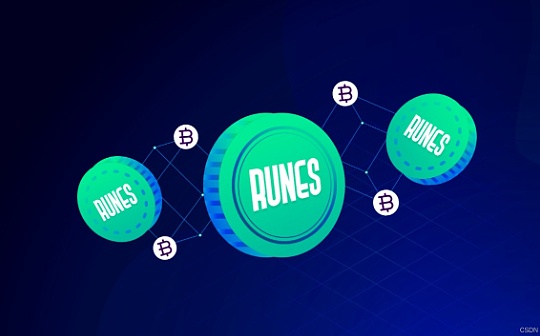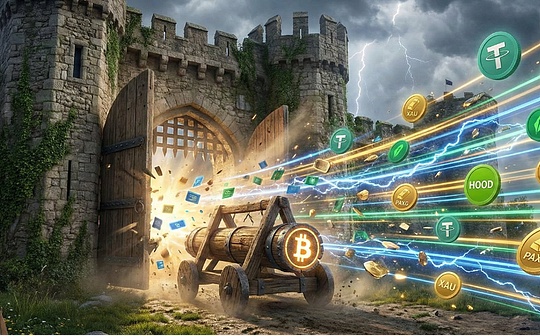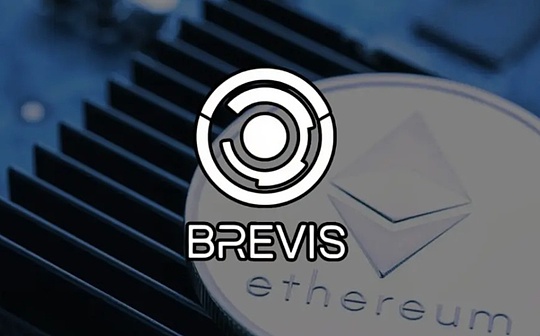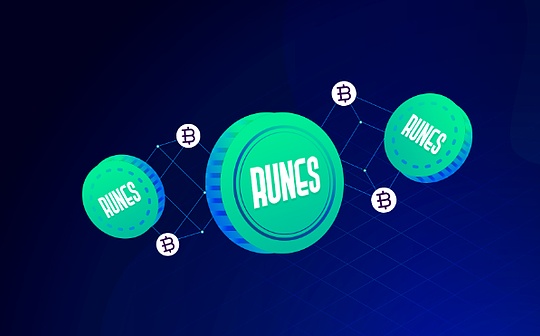
Author: @Web3Mario
introduction:Yesterday, I accidentally learned from a friend that he had obtained a considerable return on investment in the field of BTC inscriptions, which deeply aroused the author’s mentality of missing out on his own. He was anxious for two consecutive days, which was really ashamed.Recalling that after the Ordinals technology architecture was just released earlier, the author studied the relevant documents, but as a developer, I was quite disagreeing with this technical path. At that time, my judgment was simply a reversal of encryption technology, because it was a matter ofThe design concept seems to be similar to a distant altcoin project, Color Coin, which is how to use BTC’s technical architecture to issue some independent tokens, but the difference is that Ordinals does not redevelop a chain, but chooses to reuse it has been obtained.Broadly agreed BTC network.Compared with the proposal of on-chain virtual machines (such as EVM or other WASM), this architecture has been proved by the market that it is really a bit simple and not scalable. Due to the limitation of BTC, there is no Turing-complete execution environment, and the related application layerDevelopment is relatively difficult, and it is also very expensive!Even after the so-called orthodox Runes technology was released, the author was quite dissatisfied after reading the relevant documents. He just determined some standards to make the so-called BRC-20 look less simple, and these are simply in the on-chain virtual machine solution.Not to mention, because designing an ERC-20 is something that a newly-entered Web3 developer can accomplish… However, these judgments are simply pale in the face of the real wealth effect. After calming down, I would like to share with you some related thoughts and explore the core value of Web3.
The tangible fact at the root of all our thought-distinctions, however subtle, is that there is no one of them so fine as to consist in anything but a possible difference of practice. To attain perfect clearness in our thoughts of an object, then, we need only consider what conceivable effects of a practical kind the object may involve—what sensings we are to expect from it, and what reactions we must prepare.
—-WilliamJames
Anarchist post-Snowden Web3
Many of my friends were amazed at the emergence of Bitcoin, just like the Golden Age of ancient Greece. This seemed to be an unconventional and difficult to explain genius product. However, I do not agree with this view. I think the invention of Bitcoin was not a coincidence.It was an inevitable result in the network environment at that time.
In the previous introduction, we have reviewed the development history of the Web. In the era of classical liberal networks, the principles of Internet protocol design have gradually been formed with the principles of openness, inclusiveness, globalization and neutrality. However, with the emergence of a large number of web applications, it has gradually formed.The composition of Internet users has undergone great changes, from the subculture group of the previous users, namely the coder, to a universal mainstream cultural group covering all kinds of people, with high efficiency and low cost as the priority.Pragmatism prevails.
But this does not mean that the principle of open agreement has completely disappeared. Unlike political revolutions, the evolution of technology is non-violent, so the evolution of corresponding ideology is a moderate fusion process.In fact, some developers, we can call them classical liberals, have always adhered to the principle of open agreements to carry out technology research and development and related concept promotion work. We can easily find them, such as the Free Software Foundation and the Electronic Frontline Fund.Organizations such as the Association and Wikimedia Foundation have successively funded and promoted many interesting technical solutions, such as Tor, VPN, SSH, etc. They are also the earliest batch of Bitcoin users, and use Bitcoin to raise funds, so there is reason.I believe that Bitcoin’s design must come from this group of people, with the initial purpose of developing an unregulated, payment-based, anonymous electronic cash system for the organization.
With the great success of Bitcoin, it has attracted the interest of some of the computer experts. I believe that Vitalik and Gavin Wood belong to this group of people. With the help of Bitcoin’s most important original technology: POW consensus algorithm, a decentralized and anonymous computer system is established., and thus completely change the classic C/S web development paradigm.
With the outbreak of the sensational “prism events”, the credibility of technical and political authority has been greatly reduced, which provides excellent opportunities for the promotion of new concepts, so we can see the latest semantics.The emergence of Web3, which is the Web3 proposed by Gavin Wood, here I think it is necessary to quote this classic description again:
Web 3.0, or as might be termed the “post-Snowden” web, is a re-imagination of the sorts of things we already use the web for, but with a fundamentally different model for the interactions between parties. Information that we assume tobe public, we publish. Information we assume to be agreed upon, we place on a consensus ledger. Information that we assume to be private, we keep secret and never reveal. Communication always takes place over encrypted channels and only with pseudonymous identities as endpoints; never with anything traceable (such as IP addresses).
The core vision of this version of Web3 is to build an authoritative, censored, and fully protect personal privacy. This can be seen as a classic interpretation of anarchism in the online world, so I would like to call him anarchismWeb3.It is worth noting that the significance of making such a clear distinction is that we need to figure out what principles to use to guide our application design in order to realize our final vision, so as to complete the construction of the network, which is most in line with our demands..
Under such ideological guidance, the ultimate pursuit of decentralization and privacy has spawned a series of interesting Web3 projects. Successful cases in such projects are usually mainly based on underlying infrastructure. Recalling the exquisite cryptography and consensusI won’t give specific examples of algorithms, because you can find many famous projects, but not many involving the application layer and protocol layer. Perhaps ENS is an exception.
Hyperfinancialized free capitalism Web3
Since MasterCoin designed the ICO crowdfunding method in 2013, crowdfunding financing models with cryptocurrencies as the subject matter have gradually become popular. With the improvement of protocol layers such as ERC20, the threshold for issuance and participation has been greatly reduced.In 2017, the development of ICO reached its peak.
Let’s review that history. Coin (that is, Token), as the subject matter, has evolved into different types, the most representative of which are practical credentials and ownership credentials.The former is similar to an entry ticket. Only with this certificate can you have the right to use the target project. In fact, in the early stages of ICO development, most of the tokens issued by projects belong to this type, and representative ones include Mastercoin, NextCoin, and evenEthereum (the early Ethereum design did not include POS planning).
The emergence and rapid development of ownership certificates, I think there are two opportunities. The first is that the geek named Sunny King proposed Proof of Stake (POS) in 2012 and developed Peercoin. I think this concept isThe greatest contribution is that for the first time, a paradigm design that uses a token to carry the ownership of a certain exclusive network (although here, the token carries more of a dividend right), and then the paradigm design around the network ownership becomesWith the hot topics, and with the 2018, EOS’s ICO reached its peak in development, however, the excessive development bubble and the unfulfilled application explosion have put development into a stagnation.
The second development opportunity of ownership certificates, I think, can be traced back to the issuance of Comp of Compound, which has completely opened up the era of hyper-financialized free capitalist Web3.For a long time before this, the focus of the development of ownership certificates was on the allocation of ownership of the underlying network, and the application layer seemed to have not responded. In fact, some familiar Dapp projects were born very early, and at that time, “management.”Member governance + “paid system” is basically the mainstream model. Until the emergence of Comp, the Dapp development model of “community joint governance” is realized through Token carrying the ownership of the application + “Mining incentive” around this key purpose of Dapp has gradually gained widespreadRecognized and develop rapidly.Due to the rich financial returns, smooth exit mechanism and free market environment, investors of all sizes have brought massive amounts of funds to Web3. Similar to the changes in the classical liberal network, the industry has once again accompanied by major users.The changes in composition have ushered in, and the meaning of Web3 has also undergone a huge change. Let us recall the definition under Chris Dixon together:
Web3 is the internet owned by the builders and users, orchestrated with tokens. In web3, ownership and control is decentralized. Users and builders can own pieces of internet services by owning tokens, both non-fungible (NFTs) and fungible.
The difference has become very obvious at this point. Web3 has gradually changed from its original pursuit of authority and personal privacy to carrying network ownership through digital assets, thereby realizing the redistribution of network resources.Under such a vision, the private ownership of digital assets and an absolutely free market are the ultimate goal, and deauthorization of authority and personal privacy has become means to ensure the above two goals. This is an important change, which is basically completely equivalent toThe political pursuit of liberal capitalism (in fact, in political philosophy, liberal capitalism is basically equivalent to a specific, concrete anarchism).
Under such ideological guidance, innovation in the value categories and ownership allocation methods carried by digital assets has become the main evolutionary direction. Basically, before the recent fierce wave of deleveraging, the main innovations in the Web3 industry are concentrated here.We need to be very clear about the difference between the two, because this will bring two completely different evaluation criteria, and some Web3 projects look great to the anarchist Web3 supporters, but they look unstoppable to the free capitalist Web3 supporters.It’s meaningless, of course there are completely opposite situations. In the final analysis, it is because of ideological differences.
Innovation around digital assets will continue to be the core driver of Web3
After figuring out the differences between these two propositions, I hope to explore what the core driving force of the next wave of Web3 may be.Personally, I agree more with some pragmatic views. In my opinion, the meaning of judging a certain concept or concept of things lies in what effect does this concept have on human behavior and what value it has produced.The top-down way of thinking in metaphysics is usually not conducive to social development. From this perspective, I also recognize socialism.
Guided by this concept, I think the development of the online world will most likely develop along a compromise and low friction path. Do you still remember the Internet ideological map we mentioned in the previous article? Generally speaking, we canClassical liberal networks, anarchist Web3 and liberal capitalist Web3 are divided into the same area. This is a relative part of a technical authoritative network, and the future Internet world ideology will burst into greater numbers in the blue shadow part.energy.The core driving this development is whether new and more universal value propositions will be discovered. Judging from some existing achievements, I believe that digital assets basically have such capabilities, or around digitalInnovative assets will continue to be the core driver of Web3.
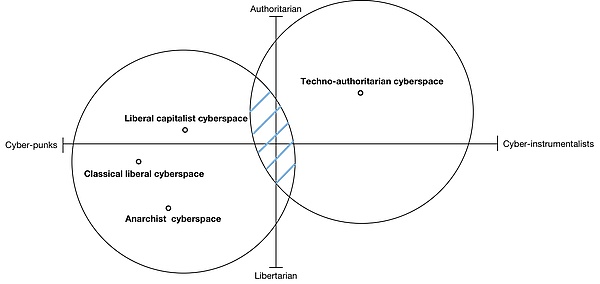
First of all, I need to declare that I do not agree with the value of work related to decentralization and privacy protection. On the contrary, I think the relevant results are usually enlightening, but based on the current actual situation, these two goals areUsually based on the evolution of cryptography technology and subject to the development of related technologies, most of the products supported by this concept are not satisfactory in performance, or compared with some mature computer network technologies, these products are stillThere is a lot of room for improvement, and since cryptography, as a basic discipline, has the characteristics of large investment and long output cycles, the current development status of Web3 companies does not match, and I don’t think this situation will be in a short period of time.Change.
However, the discussion on digital assets will become different.So far, I am still feeling the ingenuity of the design of digital asset ownership (or crypto assets) in the Web3 world, and the most direct impact includes three aspects:
-
A method of ownership confirmation that relies solely on technical security;
-
A method for realizing digital assets that physically ensures that the owner’s domination of digital assets is exclusive;
-
A method of digital asset transfer based on the Internet;
It is no exaggeration to say that any technical solution and specific products before this are not as perfect as the Web3 solution for the implementation of digital assets, which also brings more practical value to the digital assets in Web3, that is, highLiquidity and low-cost trust guidance inject new vitality into the development of the online world.Therefore, I believe that the core driving force of the next wave of rapid development of Web3 will continue to be innovation around digital assets, and simply put, innovation may be carried out from the following aspects:
* Paradigm innovation: Similar to FT and NFT, the proposal of digital assets of each new paradigm has injected unprecedented development momentum into Web3, because the proposal of the new paradigm gives people specific boundaries of innovation and is of guiding significance.On the surface, Fungible and Non-Fungible, a pair of categories with opposite meanings, is enough to cover all types, but what I want to express is that this is wrong, imagine gender, we took gender dualism for granted for a long time, look at the achievements we have made now.In fact, I think it is interesting to propose some Token paradigms with different characteristics under specific conditions, and Fungible is just one dimension, and more dimensions will be discovered. Of course, the premise of innovation is to propose corresponding paradigms.The specific application scenarios are valuable.Just recently, the proposal of new digital asset carriers such as Runes is a very good start;
* Value innovation: Carrying a new type of value through a certain economic model or application design, combining the existing FT and NFT paradigms, is also a very meaningful innovation direction.Taking FT as an example, I think the value carried by the current FT can be roughly abstracted into the following types, practical value, growth value, dividend rights value and governance value. In the following article, I will analyze this in detail.The differences between the four types of value.Based on the current development of the industry, I think credit value is likely to be used as the fifth dimension to supplement this.
* Business innovation:This type of innovation usually uses specific businesses as a breakthrough point, trying to solve old problems with new methods in order to achieve better results. Here I think there will be two potential innovation paths. The first is the transformation of traditional Internet services.Using certain characteristics of digital assets to partially optimize or transform existing business models to form new competitiveness. The second is to optimize and transform existing usage models combined with digital assets, or it can also be called innovation in token models.This type of innovation can usually serve as a catalyst for industry development, similar to Yield Farming, X-To-Earn, etc., all belong to this category;


